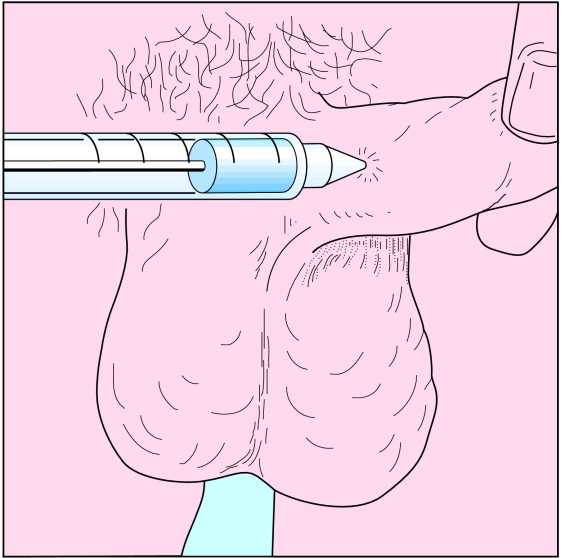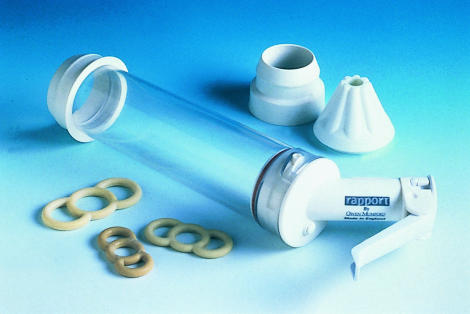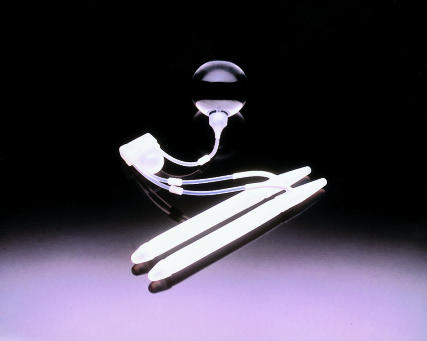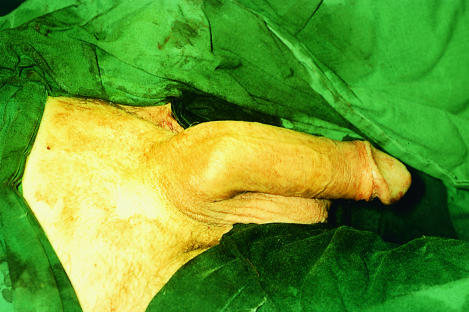Treatment of erectile dysfunction is initiated after taking a patient’s history and examination (see previous articles), and possibly investigation.
Medical management
In highly selected patients with a clear psychological problem psychotherapy or sex and couple therapy can be used, but these are time consuming and are available to only a small number of patients. Erectile dysfunction is of a largely psychological nature in a third of patients, in a third it is largely physical, and the remaining third have both physical and psychological factors.
The first line treatment for erectile dysfunction with most practitioners is now with alprostadil by an intracavernosal injection or an intraurethral pellet, even in patients with minor psychological problems. In this group the treatment may break the “failure cycle,” especially if given in combination with limited psychotherapy and sensate focus techniques.
Investigation of erectile dysfunction
Mandatory
Blood pressure
Glucose (blood or urine)
If reduced sex drive
Testosterone—total, serum hormone binding globulin (SHBG), and free androgen index (FAI)
Follicle stimulating hormone (FSH)
Luteinising hormone (LH)
Prolactin—especially for reduced sex drive in a younger man
Other possible investigations
Nocturnal erection testing by “snap gauge” or Rigiscan
-
Vascular function
- Doppler colour ultrasound
- Response to injected drugs
- Arteriography
Injected treatment
Papaverine was introduced in the early 1980s as the first effective intracavernosal injection treatment for erectile dysfunction. Given in doses of 7.5-90 mg, initially alone and later with phentolamine as a synergist in the ratio of 30:1, these treatments did not have a product licence but they were effective, cheap, and easy to use, although they had a high incidence (up to 25%) of prolonged erection.
Alprostadil (prostaglandin E1) was given a product licence in 1994 and is supplied in 5, 10, and 20 μg doses. Patients are usually started on a small dose in the clinic but are advised that the injection may be more effective in a more relaxed atmosphere at home. Lower doses are more likely to be effective in counteracting neurological disease.
Vasoactive intestinal polypeptide (VIP), 0.025 mg in combination with phentolamine (1 mg or 2 mg), is awaiting a licence, and there have been early reports of success from trials.
Triple therapy (a combination of papaverine, phentolamine, and alprostadil) is used for patients in whom individual drugs have failed. Treatment usually starts at a dose of papaverine 30 mg, phentolamine l mg, and alprostadil 20 μg.
Consent forms for treatment should be used, especially if unlicensed preparations are being prescribed. All these treatments are intracavernosal and should be initiated under careful medical supervision. Initial doses for all compounds are usually low because of the risk of priapism (an erection lasting longer than 4-6 hours). As this may occur with intracavernosal injections, it is essential that practitioners familiarise themselves with the treatment of priapism.
Intraurethral treatment
The medicated urethral system for erection (MUSE) is a pellet of prostaglandin (in doses of 125, 250, 500, or 1000 μg). This pellet is placed in the urethra through the meatus and produces an erection after about 15 minutes. This treatment is a popular choice for both patients and physicians because of its ease of use, but, in common with other prostaglandin treatments, it has a relatively high incidence of penile pain, which may make patients less willing to continue the treatment.
Possible side effects of intracavernosal injection include bruising, pain, priapism, and fibrosis
Oral treatment
Yohimbine has been used for many decades and may be taken as a 5 mg tablet three times daily or as 5-15 mg about an hour before intercourse. It is more effective in patients with psychological erectile dysfunction. Although it has been claimed to work for about half of patients, many specialists believe its effects to be largely placebo related. Its side effects are minor (sometimes slight anxiety), and it is contraindicated in severe hypertension. It is not licensed, and no long term toxicological data are available,
Treatment of priapism
If a man has an artificial erection that lasts more than 6 hours it must be treated as an emergency
The longer that it is left the more likely it is that he will have, at best, fibrosis or, at worst, gangrene of the corpora
Management
1 Aspirate 50 ml of blood from each corpus through a 19 gauge butterfly needle into a 50 ml syringe with a Luer lock
2 If penis becomes flaccid and then rigid again open an ampoule of phenylephrine* 10 mg in 1 ml, take out 0.2 ml (2 mg), and dilute in 10 ml of normal saline
3 Inject 1 ml (200 μg) of phenylephrine solution through the same butterfly needle and aspirate, if necessary, a couple of minutes later. Repeat this every 5-10 minutes until a total of 5 ml (1 mg) of solution has been injectedAlternatively, a 20 μg/ml solution of adrenaline can be used, with further aspirationThe maximum dose of phenylephrine should be 1 mg, and the maximum dose of adrenaline should be 100 μg (5 ml)
4 Metaraminol* (1 mg in 50 ml saline) can be substituted, given slowly in 5 ml doses every 15 minutes. This should not be used in patients taking monoamine oxidase inhibitors
5 On removing the needle, get the patient to press firmly for 5 minutes to prevent massive bruising
6 If none of the above works urologists should be called in
The blood pressure and pulse should be closely monitored, especially with hypertensive or atherosclerotic patients and those taking monoamine oxidase inhibitors. For such patients, facilities should be available to manage a potential hypertensive crisis, which may, rarely, be fatal
*A vasoconstrictor sympathomimetic
Sildenafil (Viagra) is a type 5 phosphodiesterase inhibitor that leads to release of nitric oxide, an essential part of the erectile process. Initial reports suggest that it can produce an effective response in up to 88% of patients with largely psychological erectile dysfunction. Clinical response has also been shown in patients with physical disease, including diabetes, and patients with spinal injury. The most effective dose seems to be 50-100 mg with minimal side effects, which include disturbed colour vision and arthralgia (priapism has not been reported). It is totally contraindicated for patients taking nitrates for angina or hypertension. It is an important development in the treatment of erectile dysfunction.
Hormonal treatment
Testosterone is usually ineffective in treating erectile dysfunction in patients with normal serum testosterone concentrations and may exacerbate the problem by increasing a patient’s sexual drive without improving his ability to perform. It may be given orally but is usually given as an intramuscular depot injection at intervals of 3-4 weeks, by daily patches, or by implants every six months. Great care should be exercised in patients with possible carcinoma of the prostate, and levels of prostate specific antigen (PSA) should be checked initially and every six months.
Hormonal treatment for erectile dysfunction
Testosterone should be used (usually intramuscularly) only for patients with low testosterone levels (free or total)
Patients should be monitored for possible carcinoma of the prostate, for example, by six monthly checks of prostatic specific antigen levels
Ethical considerations
Some clinics insist on seeing both members of a couple before starting treatment, but many clinics see only the male partner and are therefore totally reliant on his history. However, many patients are not in a relationship and are afraid to embark on one because of fear of erectile failure. The confidence gained by the certainty of obtaining an erection enables a proportion of this group (whether their problem is psychological or physical) to initiate a relationship, and many patients will have a resumption of normal erectile function.
Misuse of these drugs is a consideration. There are isolated reports of the use of intracavernosal injections in association with prostitution and anecdotal reports of their use in sex shows, and this may become a big problem with oral sildenafil. After a drug is prescribed there is clearly no possibility of monitoring its use. It is impossible to check for paedophile and other sexual offences, and patients in these groups may receive help to restore erectile function, with obvious medicolegal implications.
The treatment of homosexual men may be a reflection of an individual doctor’s prejudices. As a patient’s history is the only evidence available, it would clearly be discriminatory not to treat men who have male partners. Some doctors prefer not to, or refuse to, treat patients who are infected with HIV, but, unless there is uniform testing of all patients, this information is usually available only if the patient volunteers it.
Erectile problems are common in men infected with HIV, and some clinics are now treating infected patients, who are usually in long term relationships. Before treatment, both partners are usually counselled about the risks involved and are asked to give signed agreement to treatment. Again, as in heterosexual relationships, injections may be used in a commercial situation. The occurrence of HIV being knowingly transmitted after treatment to restore erectile function is extremely rare, and there have been no reported cases in the United Kingdom.
Vacuum devices
There are many vacuum devices, either manual or battery operated, currently available for treating erectile dysfunction. The penis placed in a plastic tube, and venous blood is drawn into it by suction. Once it is erect, a rubber constriction ring is placed at its base to prevent detumescence. These devices are generally safe, but the erection should not be maintained for more than 30 minutes as the penis may become cold and painful because of the constriction. Vacuum devices are the preferred option for patients who are afraid of injections or in whom injections have not been successful. They cost from £100 to £300 and are usually supported by manufacturers’ helplines and money back guarantees.
Indications for a penile prosthesis
Organic impotence
Problems with intracavernosal drugs and external devices (unwilling to consider them, failure to respond to them, unable to continue with them)
Penile fibrosis from injection
Peyronie’s disease with impotence
Damage after priapism
Psychological impotence
After all other treatments have failed
Surgical management
Surgery for venous leakage and microvascular techniques for revascularisation of the corpora are rarely done, and the results are not good. The only surgical treatment of any value is inserting a penile prosthesis. Since their advent in the mid-1970s, prostheses have developed considerably from poorly concealed, low cost, trimmable silastic rods to ones made of silicone outside a metal core and self contained, inflatable cylinders. Inflatable devices are either two part prostheses with a combined reservoir and pump that sits in the scrotum or three piece models in which the pump alone sits in the scrotum and the reservoir lies in the lower abdominal wall.
Costs of prostheses*
Semi-rigid malleable £650-720 Inflatable two piece £1995-2300Inflatable three piece £2700-3700
*Prices for 1998 excluding VAT
Indications for use of prostheses have changed with the development of intracorporeal injections, vacuum devices, and oral preparations. Patients commonly needing surgery are those who have had pelvic surgery or who have diabetes or atherosclerosis. Prostheses are also useful in patients impotent with Peyronie’s disease (which seems to be getting commoner) as they correct the deformity as well as the impotence.
Cost apart, the choice of prosthesis is up to the patient. The semi-rigid cylinders do stick out and are therefore not suitable for younger men with children in the house, those participating in swimming and sporting events, and naturists. The cost of an inflatable prosthesis is not countenanced by some NHS trusts, but persuasion may be possible in a particularly deserving case such as a young diabetic patient impotent through no fault of his own and whose marriage is at risk.
Operative procedure
The operation is done under regional or general anaesthesia. Circumcision is often necessary with many semi-rigid prostheses, so this should be done initially.
Preoperative counselling about a penile prosthesis
Counsel patient, with partner, that
The glans will not be filled
The result will be adequate for vaginal penetration
There is a small (2-5%) incidence of infection
The penis will be colder
Ejaculation will still be possible
The only solution to a failed operation is a replacement prosthesis
A prosthesis is not as good as the original
The corpora are exposed and opened through an incision large enough to insert a Hegars dilator and are dilated full length from just inside the glans to the ischium, compressing the normal corpora. This may be difficult with fibrotic penises, after priapism, or with Peyronie’s plaques. With multipart prostheses, all components are filled with saline and the tubing connected, the pump is placed in the most dependent part of the scrotum, and the reservoir is put under the rectus sheath.
Postoperative management
Pain relief must be provided as the operation is painful.
Antibiotics—A broad spectrum antibiotic should be taken orally for a week after the operation.
Voiding—If there are difficulties with voiding, use clean intermittent catheterisation.
Postoperative use—Semi-rigid prostheses may be used after four weeks. Patients can be taught how to pump up an inflatable prosthesis after four to six weeks.
Postoperative problems
Infection occurs in 1-10% of cases, depending on the difficulty of the procedure. Repeat operations are more prone to infection. It is usually necessary to remove the infected part or complete prosthesis, and, although difficult, it is possible to replace it six months later.
Erosion is usually due to infection or to an unsuspected breach of the urethra at surgery.
Glans ischaemia occurs with vascular compression or damage.
Supersonic transport (SST) deformity (also known as Concorde deformity) with glans droop may be unsightly but may not matter if there is an additional glandular erection.
Mechanical problems are now uncommon. If they occur the part should be replaced.
Prognosis
Penile prostheses give acceptable results. In many large series over 80% of patients and their partners were satisfied with the results. In those with Peyronie’s disorder, a prosthesis straightened the penises of 70%. There is no real age limit for the operation, but a prosthesis should not be inserted unless it is going to be used.
Figure.
Intracavernosal injection of alprostadil
Figure.
There are reports of intracavernosal injections and, increasingly, oral sildenafil being misused in live sex shows and prostitution
Figure.
Vacuum pump and constriction rings
Figure.
Three piece penile prosthesis in which the pump alone sits in the scrotum and the reservoir lies in the lower abdominal wall
Figure.
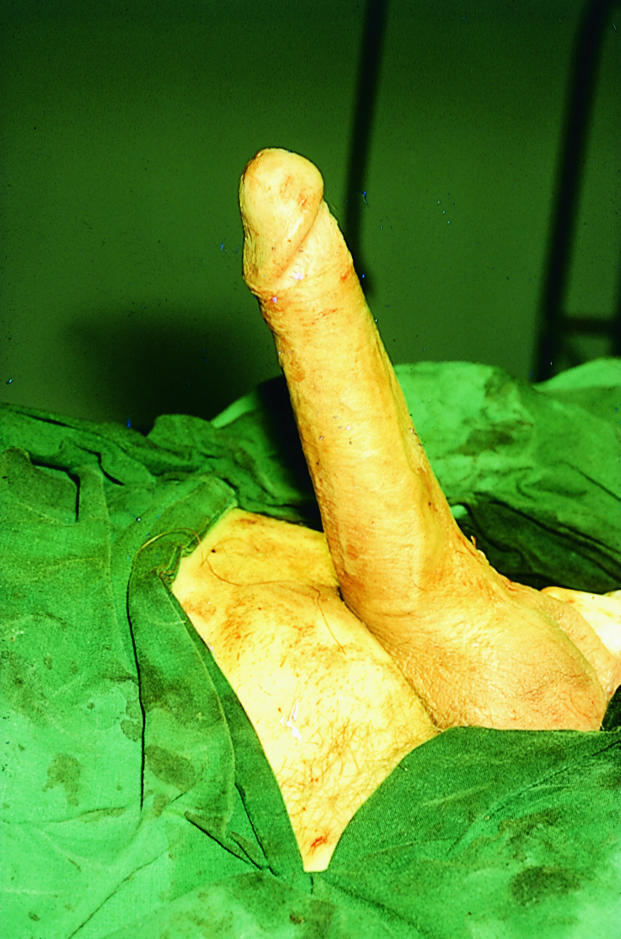
Appearance of a penis after insertion of an inflatable prosthesis, with the device deflated (top) and inflated (left)
Acknowledgments
The picture of a live sex show is by Axel Kirchhof and reproduced with permission of Action Press and Rex Features.
Footnotes
Wallace Dinsmore is consultant physician at Royal Victoria Hospital, Belfast, and Christine Evans is consultant urologist at Clwyd Hospital, Rhyl.
The ABC of sexual health is edited by John Tomlinson, physician at the Men’s Health Clinic, Winchester, and London Bridge Hospital, and formerly general practitioner in Alton and honorary senior lecturer in primary care at University of Southampton.



